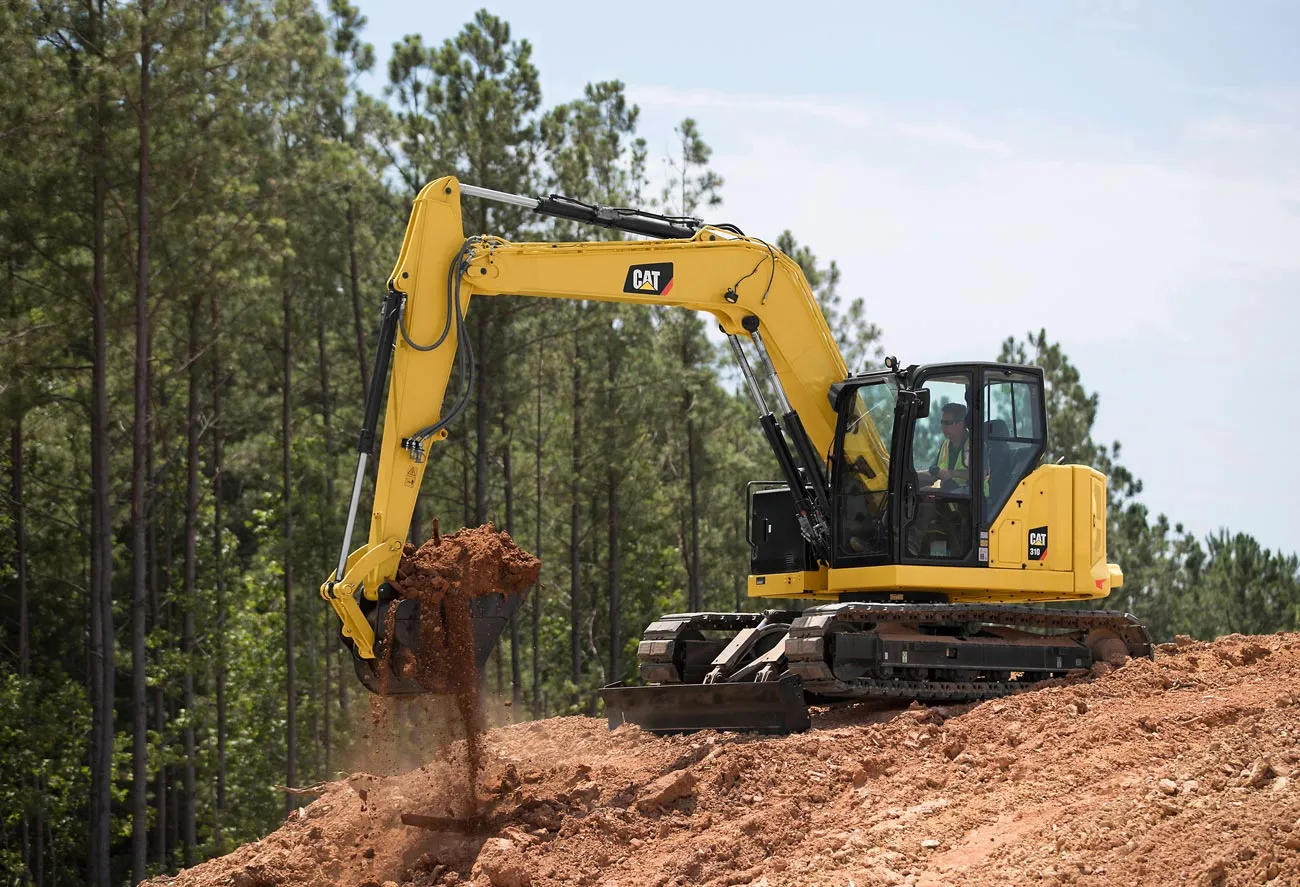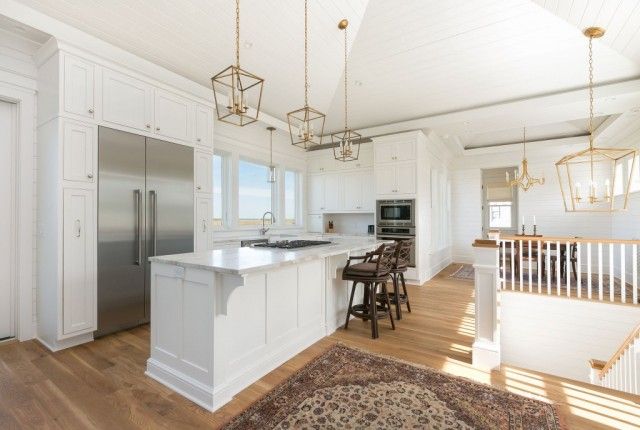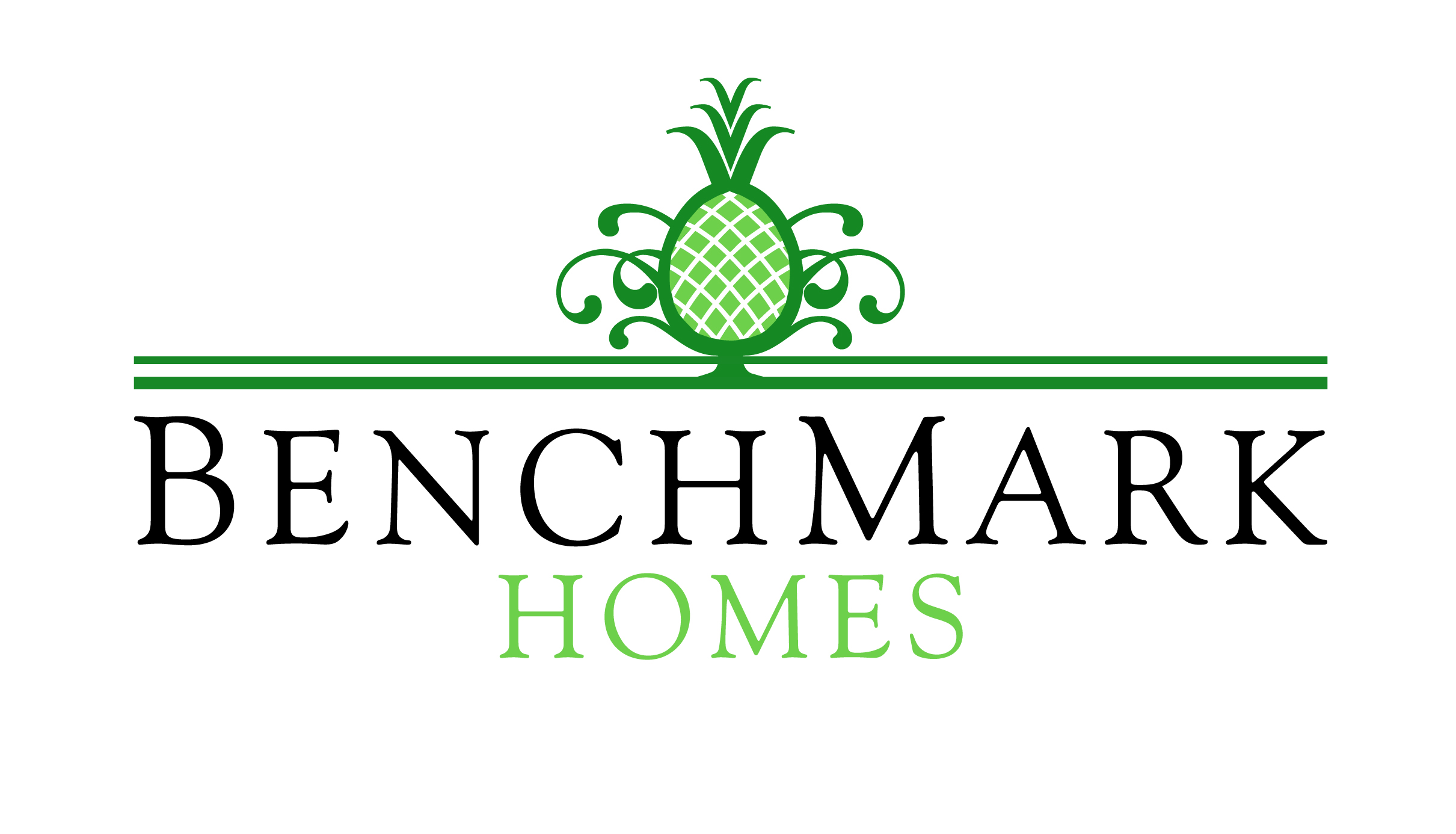Our Custom Home Building Process
Benchmark's on the way to building your new custom home.
I Want A Custom Home, Where Do I Start?
If you pose this question to 10 different people who have built custom homes, chances are you’ll get 10 different answers. And the value of their answers for your particular project will depend on how long ago they built a custom home.
"DO NOT START WITH THE ARCHITECT FIRST" This is the most important repeated advice we give to perspective clients for the reasons explained further below under Step 3.Once a custom builder understands your wants and needs, he will work with an in-house architect, or an architect within his network of trade partners, to begin the design process. Most custom builders will work with both the home buyer and the architect during the design phase to clarify issues related to the construction process. Regardless of the style or design you’ve chosen for your new home, don’t be afraid to ask questions as the design takes shape. Both the builder and the architect may be able to suggest alternatives based on designs they’ve implemented for other houses. Try to balance creativity and flexibility as you strive to make your house livable and unique.
When the designs are complete, your builder will request bids from his network of trade partners. If you’re requiring something that’s new to your builder, he may ask you to suggest suppliers or installers. (Do your homework before this phase if you want specific brands or installers.) If your builder’s trade-partner network is diverse, chances are his partners will offer more competitve bids than any new players, due to already established relationships. However, it doesn’t hurt for your builder to consider your suggested trade partners or suppliers; they may be great additions to his team.
In order to maximize budget and timeline, make all your decisions early in the building process, and avoid change orders. If you decide to authorize change orders late in the game, you’ll spend more in materials and labor, and your construction timeline may be longer than anticipated.
If you interview a number of builders before making your final selection, remember that the lowest price won’t necessarily yield the best value. Ask lots of questions and take a look at some of the prospective builders’ completed projects. Most importantly, be very comfortable with the builder you choose before you spend any money or sign any contracts.

Step 1 — Site Selection
Our first challenge is to find a site for your new home.
At Benchmark Homes, we are in the business of locating and marketing new home sites. While we focus on the neighborhoods within Kirkwood, Des Peres, and Webster Groves, we also have a presence in most all areas of St. Louis County, including Sunset Hills, Jefferson County, Frontenac, and Town and Country, to name a few.
Take time to familiarize yourself with your potential neighborhood by asking us about schools, churches, highway access, neighborhood stability, municipal services, etc.

Step 2 — Site Development
If you have chosen a home site from the Benchmark Homes inventory, you need not worry about site development.
We will review all the important points for you to know about how your site is serviced by utilities and how we ensure that your home is structurally sound “from the ground up”.
IMPORTANT:If you have already purchased a home site, or are negotiating on a potential home site, NOW is the best time to meet with us.
We will help you review the feasibility of your potential home site and give you our professional opinion on what it will cost you to develop this site – in addition to the cost of building your new home.
You will want to consider the following before developing your home site:
- Utility Services – Including electrical, gas, water, sanitary sewers, storm sewers, cable, phone, etc
- Test Holes – Soil testing to determine suitability of soils for supporting your building structure and, in certain areas, investigation for potential rock, plastic soils, water tables, sink holes, suitability for septic, etc
- Clearing, Grading & Excavation – Not only as they impact your anticipated costs but as they impact the architectural design elements of your new home.
- Code Compliance & Zoning Restrictions – These are imposed by the respective municipality, including front, rear and side yard set back requirements. Additionally, the site may be subject to height restrictions, tree ordinances, architectural standards, etc
- Subdivision Restrictions – These may also apply if the site is located within a legal subdivision bound by subdivision indentures and restrictions
Step 3 — Designing to Your Budget
Getting Started
Design and budgeting go hand in hand. After discussing the building site with your family, it is recommended that you meet with the Builder early on. Benchmark Homes believes meeting with your Builder first is important to help you keep from designing a home that isn't affordable.
Initial Discussions
We will have extensive discussions during which we will:
- Establish a preliminary design of your home
- Determine its anticipated size
- Discuss your desired level of finish
- Discuss appropriate allowances
- Estimate its anticipated cost
Prior to Architect Selection
Before we engage a professional architect to begin the formal drawings for your home, we want you to be sure that you are prepared to increase your investment in this building opportunity.
Pre-Construction Service Agreement (PSA)
To engage the architect and participate in other Pre-Construction Services (where applicable), Benchmark requires a Pre-Construction Service Agreement (PSA). The PSA is a retainer that allows us to begin all necessary design and site work before construction begins. This includes, but not limited to:
- Drafting or modifying your plans
- Completing required surveys and engineering
- Soil testing
- Title work
- Preparing your detailed custom home contract and budget
Whether you're building on our lot or yours, the PSA covers the essential steps to confirm your home's design, feasibility, and accurate pricing. The retainer is credited toward your final contract. If you choose not to move forward, it is refundable minus any costs already incurred.
Architectural Services
The next step is to employ an Architect who will work with you and your builder to design and establish a fully engineered set of working plans. We will specifically recommend an architect who best suits your personality, budget, time constraints, etc., if you do not have your own.
Using Your Own Architect
You may also choose to work with your own architect; however, you will be assuming more responsibility for the performance of an architect that you recommend. We have found our architectural references to provide cost effective building plans with great design. Our architectural references are also very familiar with the unique requirements of the various municipalities in which we specialize.
Ongoing Cost Monitoring
Throughout the architectural design phase we will continue to monitor the architectural design and update your anticipated costs. If we become concerned that you may be exceeding your desired budget we will:
- Ask the architect to make the necessary revisions
- Identify certain items as option so they can be considered further
Step 4 — Contract & Financing
Investment Requirements
Because of the unique nature of a custom home, you will be expected to make a significant investment in the project during your contract period. In addition to the architectural fees, you will be making:
- A 10% down payment (which includes the construction deposit) at the time the contract is signed
- An additional 5% under roof if a Benchmark-owned lot
If a client owns their lot, deposits are due after each milestone is completed. These payments will be spelled out in advance in your contract.
Investment Requirements
We utilize a standard contract form provided to us by the Home Builders Association of St. Louis. In a few areas, we have customized this standard contract form to clarify issues unique to our area of specialization, in-fill custom homes. We provide a copy of the standard contract form in advance and ask that you review it in detail. You will find it to be an industry standard form but a thorough advance review of the contract will answer many of your questions and concerns.
Construction Financing
If you have already chosen a home site from the Benchmark Homes inventory, you need not worry about construction financing. We will take care of everything! We will review all the important points for you to know about how construction is financed and how we ensure that your investment in your new home is kept safe and protected.
Disbursing Company & Investment Protection
Specifically, we will review how your contract deposits and all construction loan funds are directed through a disbursing company. The disbursing company makes the payments we direct once they have established the authenticity of the bill and collected lien waivers from the subcontractors/suppliers. These steps are taken to protect your investment and so that you can obtain title insurance when you close on the purchase of your new home at its completion.
Assistance for Purchased or Negotiating Sites
If you have already purchased a home site or are negotiating on a potential home site, we can assist you in identifying lenders who specialize in this relatively unique market and work with you and your lender to see that the same investment protection mechanism are in place as described above.

Step 5 — Finish Selections
Once the architectural design of your home is complete, we move into the Finish Selections phase. As part of this process, up to 25 hours of support with a dedicated interior designer, a partner of Benchmark will be included to help guide you through your selections. By now, you will have explored various features and made some preliminary finish choices during the Design & Budgeting phase.
During this step, you will finalize all of your finish selections within your set contracted allowance. Benchmark’s dedicated interior designer, who will work directly with you throughout the selection process, will:
- Guide you through each selection
- Provide professional advice
- Ensure all finishes, colors, and materials coordinate seamlessly
- Help create a cohesive and polished design that reflects your personal style while maximizing functionality
Additionally, each showroom features expert consultants to collaborate with you on finalizing your allowance selections. You will also receive a list of preferred vendors to help prioritize and schedule your selections.
Your selections may include:
Exterior Finishes & Materials (typically selected during architectural design phase for ARB requirements per municipality)
- Stone and masonry
- Roof shingles or other roofing materials
- Exterior siding
- Exterior trim and gutter colors
- Exterior paint colors
- Exterior windows and doors
Interior Finishes & Materials
- Interior paint colors
- Flooring (hardwood, tile, carpet, etc.)
- Interior millwork and trim, including door styles, door hardware, base/casing, crown molding, etc.
- Mirrors, shelving, and shower doors
- Fireplace “boxes” (typically selected during architectural design)
- Fireplace surrounds/mantels
Kitchen & Bath Selections
- Kitchen and bath cabinetry
- Kitchen countertops
- Bathroom surrounds and vanity tops
- Kitchen appliances
- Plumbing fixtures
Electrical
- Electrical fixtures, including light fixtures
Technology & Special Features
- Smart home systems, thermostats, or other technology
Additional Designer Services
At an additional cost, the interior designer can provide extra services if you desire. These may include:
- Attendance at architectural design meetings to provide material or design input
- Review of architectural plans and provide feedback to the Builder/Client
- Creation of per-room selection presentations
With your interior designer already on board as our trusted partner, you can be confident that all finishes, colors, textures, and features will work together harmoniously, resulting in a cohesive, visually stunning home.

Step 6 — Fieldwork
Once the contract is signed, we will apply with the appropriate municipality for a construction permit. The permit process can take approximately two to four weeks (or more) depending on the municipality.
Once your foundation has been poured and backfilled, you can expect construction to take eight to twelve months depending on weather conditions and the complexity of the home. The expected construction time from completion of foundation will be noted in your sales contract.
Our owners, field superintendent, and other Benchmark employees can be found on your job site daily making sure that everything runs as smoothly as possible. We believe that a significant and consistent presence on the job site is necessary for effective communication and quality control.
From time to time, you will be asked to schedule specific visits with us to review the progress on your home. In between visits, we will also maintain contact with you by providing weekly updates and answering additional questions and concerns that may arise.

Step 7 — Closing
Approximately seven days before closing, we will walk through your new home. This is a crucial step in the home-buying process, offering homeowners an opportunity to thoroughly walk their new home before closing. It is not only a time to ensure that everything is in proper working condition and meets the standard industry expectations, but it is also an opportunity to familiarize yourself with the systems, features, and details of your home. You will conduct a thorough inspection of your new home to document any outstanding items or deficiencies noted.
We will work diligently to make this list as short as possible and will also use the time remaining prior to closing to eliminate as many noted items as possible. Any outstanding items at the time of closing will be presented to you at or before closing for your signature. We will coordinate completion of these remaining outstanding items with our subcontractors and you.
You will want to be very thorough in your inspection of hard surfaces such as countertops, flooring, etc as you will be specifically asked to sign-off on these items. Many hard surfaces are damaged during move-in, and it is important for us to document the condition of your home prior to move-in.
At closing, you are required to pay the remainder of the contract and take possession of your new dream home
Frequently Asked Questions
1. What is the first step in the custom home process?
Don't start with the architect, start with us. We will help you evaluate potential home sites, review feasibility, and guide the design to ensure your vision aligns with your budget. This early phase is often the most challenging, but it is where Benchmark truly excels.
2. What is the timeline for building a home?
This depends on the size and scope of your project. Most homes in our market can be built in 8-12 months. However, the quality of up-front planning, along with unknown variables such as weather conditions and labor/material challenges, will be huge factors in the actual timeline.
3. Do you help with lot selection?
Absolutely. We maintain an up-to-date list of available lots and have strong relationships with local agents to uncover off-market opportunities. If you are looking in Kirkwood, Benchmark is your go-to source.
4. Can you help develop a lot I already own?
Yes, we specialize in building on both our lots and yours. We also provide full-site development services. In fact, over 90% of our projects involve demolishing an existing structure before building new ones.
5. Do I need a construction loan?
If you are building on a Benchmark lot, we will take care of the construction financing. If you are building on your own lot, we will connect you with trusted lenders to secure the right financing for your project.
6. What contracts do you use?
We use a standard HBA contract with a few custom clarifications tailored to in-fill homes in St. Louis.
7. Should I buy land before contacting a builder?
We recommend reaching out to us before purchasing land. We will help you evaluate the lot’s feasibility, including access to utilities, zoning restrictions, and site conditions saving you time, money, and potential headaches.
8. What are the common issues with site development?
Several factors can affect the cost and complexity of site prep, including: Utility access Soil quality and drainage Zoning or easement restrictions Grading and topography Local permitting and regulations We’re experts at identifying and navigating these challenges upfront.
9. Can you help with interior design?
Yes! Your Benchmark Custom Home Contract includes 25 hours of interior design services. Our dedicated interior designer will work directly with you to guide selections, provide professional advice, and ensure all finishes, colors, and materials come together in a cohesive, polished design.
Additional services are also available for an extra cost, including participating in architectural design meetings and reviewing your plans to align with furniture/decor needs for your new home.
Ready To Get Started?
We're excited to speak with you about your upcoming project.
Get in touch with Benchmark Homes to begin planning your project today!
Email us today at Info@benchmarkhomesstl.com.
